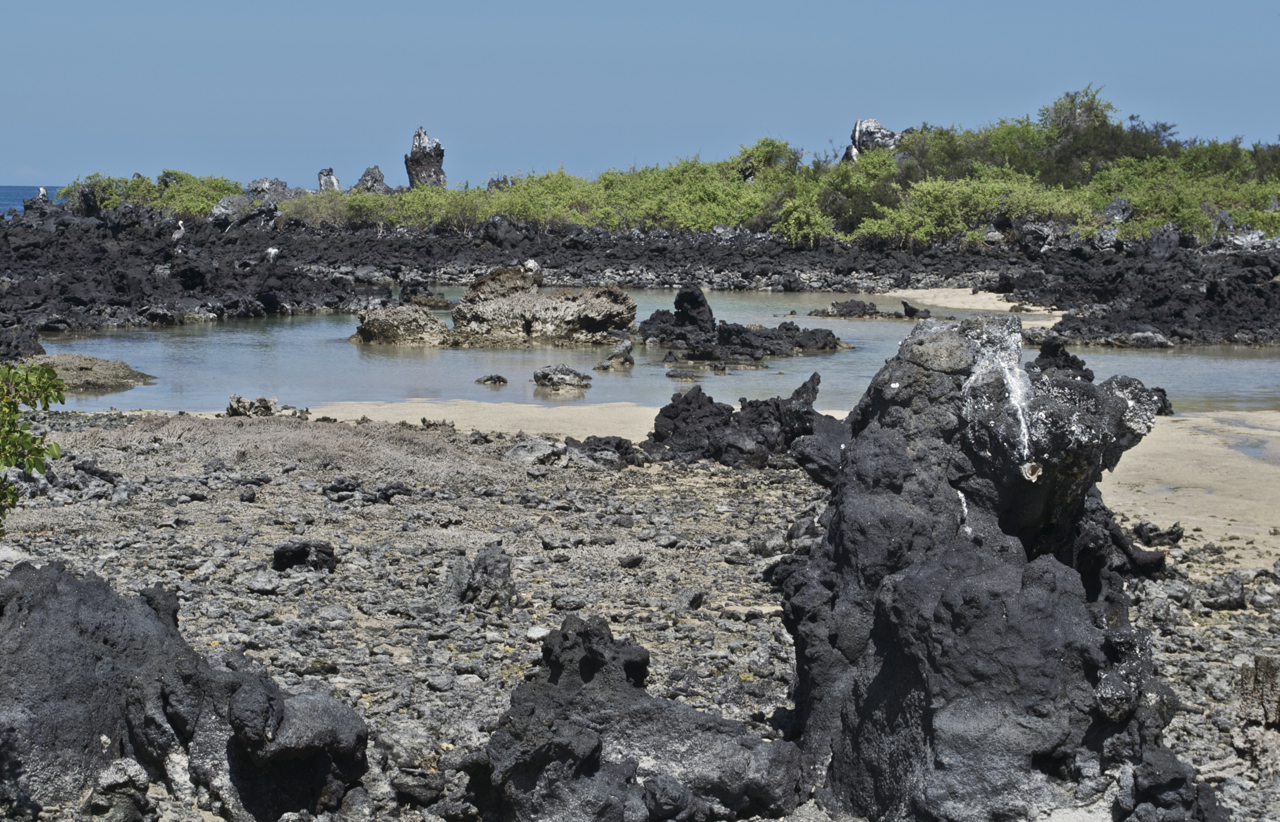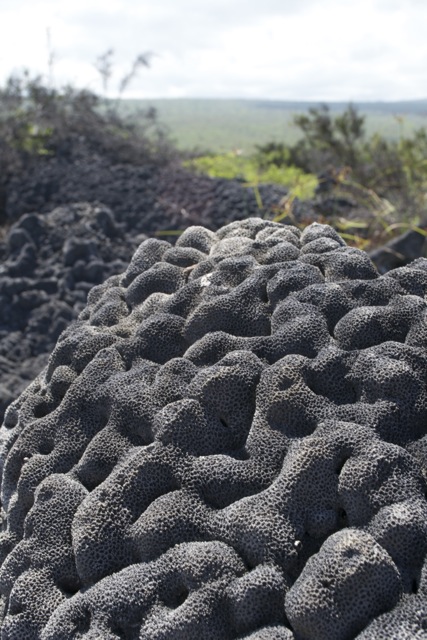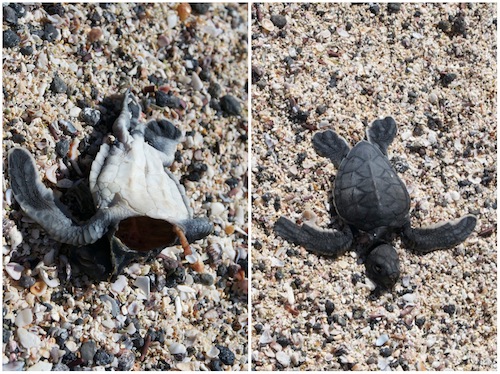This is the second installment of a six-week series about my recent trip to the Galápagos. You can read my first post, about tortoises and donkeys, here.

At dawn on June 6, more than 30 years after Lynn was chasing tortoises at the top of Alcedo, our boat anchored near the volcano’s base in Urbina Bay. By 8 a.m., I was fully breakfasted and eager to begin the scheduled 2-mile hike, on which we were likely to see giant tortoises and land iguanas.
My mood dampened after disembarking on the beach. Even at this early hour, and even doused ear-to-toe with 100-SPF sunscreen, I felt an unrelenting solar assault. (Turns out it’s hard to concentrate on nature’s glories while obsessively imagining your skin cells morphing into irregularly shaped cancerous moles.) The beach was narrow and surrounded by foreboding gray rocks. Maybe this, I thought, is what Darwin meant when describing his first visit to these islands: “Nothing could be less inviting than the first appearance.”
The Galápagos Islands are inhospitable to life in many ways, number one being the volcanos. The oldest island, Española, was formed a few million years ago when columns of hot rock rose from deep within the earth. As the rock neared the surface, some of it melted into magma. The magma pooled in chambers and pressure built until it pierced through the surface in a volcanic eruption. Many eruptions over many thousands of years created a volcano. Eventually, the tectonic plate carrying the volcano moved (as plates do) to the southeast, taking the volcano away from its magma source and making it extinct. A new volcano gradually formed above the new location of the magma hotspot, and the cycle repeated, leaving us today with a chain of 14 volcanic islands and a couple of active volcanos.*

Magma is scary because it’s unpredictable. In 1954, a Disney film crew was sailing around Urbina Bay and noticed that one section of beach looked suspiciously white. As they approached, they saw the reason: coral, coral everywhere. Turns out several miles of coastline had been uplifted some 15 feet, evidenced by not only the coral, but skeletons of fish, lobsters and turtles. Underground shifts in molten lava (or, as my guide Jason put it, “pressure building in the internal volcanic plumbing”) were probably the culprit. Even 68 years later, I could see the dusty traces of this geological caprice. Walking through waist-high mounds of coral was an eerie reminder of the volatility — and violence — of the Galápagos.
Then there’s the weather. I was actually lucky to be visiting in early June, during the pleasant transition between the two seasons. December to May is warm and wet, with temperatures in the mid-80s and 80 percent humidity. (Even my seasoned guides said that March and April are brutal; they have to begin morning hikes at 6 a.m. instead of 8 a.m.) Late June to December is the dry season, when it rarely rains and the Humboldt Current brings in chilly waters. Every seven years or so, the islands experience El Niño, which dramatically warms the waters and sometimes causes floods and landslides. Like I said, inhospitable.
I’m not a big fan of geology and climate science, but learning this stuff helped me understand the animals. Because the islands emerged from the bottom of the ocean, rather than breaking off from the mainland, all of the species on the archipelago had to initially either swim or fly there (or hitch a ride with a swimmer or flyer). Imagine you’re a family of frogs from the Ecuadorian rainforest, 600 miles east of Galápagos, and you wind up on a patch of floating vegetation that somehow finds its way to the islands. You get off your raft, look around at your bleak new home, and feel like Darwin and I did. It doesn’t seem like any creature would ever stand a chance. And yet, as Dr. Ian Malcolm would say, “Life, uh, finds a way.” (I’ll be writing lots more about how life has adapted to the Galápagos in next week’s post.)
At the end of my long hike near Urbina Bay, after gingerly climbing down the sharp rocks in a sweat-drenched tunic, I stumbled over a pile of hermit crabs on the beach. They immediately scattered, revealing the creature on which they had been feasting: a dead baby sea turtle. I practically sprinted back to the comfort of the boat.

*This explanation of how volcanic islands form makes a lot of sense for Hawaii, whose islands align in a perfect line with the tectonic plates underneath. The Galápagos Islands don’t form anything so neat, which puzzles geologists for various reasons, according to Jason. But since I don’t really get geology, I’ll stop there.
Photos by Randal Vegter
If you leave off the geology, I might have to take a stab at it, but since I’m not really a rocks sort of geologist either, that could end badly. In any case, I’m really enjoying your posts.
Thanks again for the post, and the memories!